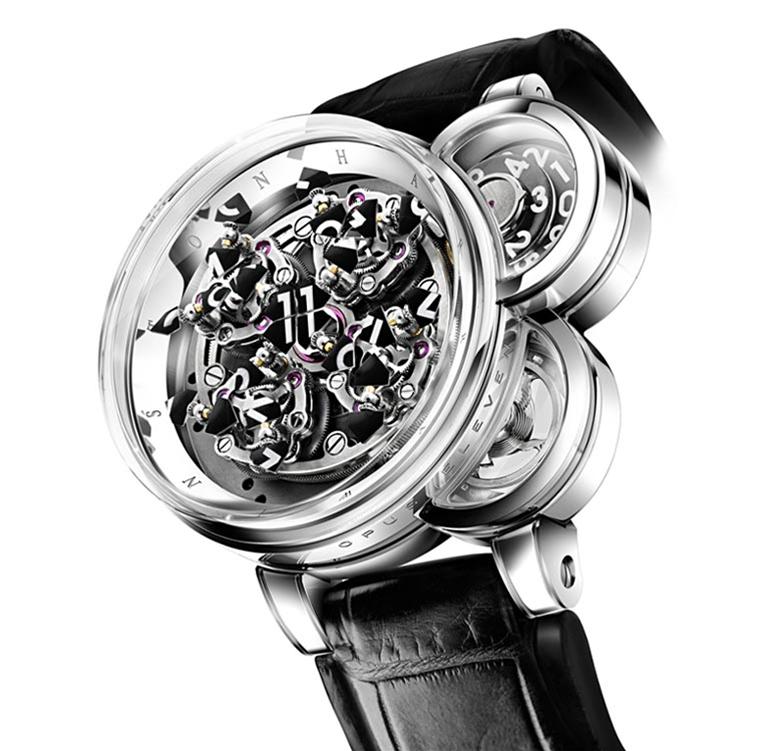

For the last eleven years, Harry Winston has partnered with a master horologist to create an exclusive and groundbreaking timepiece that reflects an unprecedented journey of collaboration and innovation. It is known simply as The Opus.
2011 heralds the latest addition to the vaunted Opus series, the Opus 11, in partnership with legendary watchmaker Denis Giguet. I can confidently state that the Opus 11 boasts the most complex and intricate time display I’ve ever seen.
Be sure to check out the video below along with a full gallery of the previous ten timepieces in the Opus Series. Many thanks to my brother for telling me about these watches!
Watch this video to see why it’s the world’s most elaborate watch!
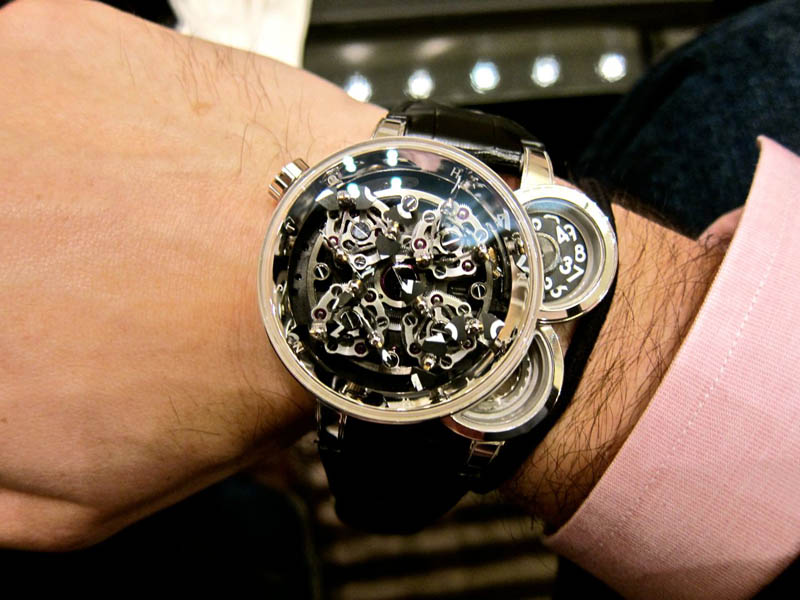
Photograph by HODINKEE

Photograph by HODINKEE

Photograph by HODINKEE
OPUS ELEVEN by DENIS GIGUET
COST: $230,000 | Limited edition of 111 watches
Opus Eleven makes news with a technology and architecture that have never been seen before. Ingenious mechanisms give the watch a rare character – an explosive temperament that makes a sport of time. In addition to its role as an instrument, Opus Eleven creates an engineering puzzle that resolves itself on the hour.
An extremely complex case stages the show. The three overlapping cylinders on three levels are configured to deconstruct time. The main circle is the hour’s domain, flanked by two pavilions. One shows the minutes on a jumping disk for the tens and a running disk for the units. The other, slightly lower, displays the regular beat of a big titanium balance-wheel.
Anarchy takes hold of the hours indication beneath the sapphire-crystal dome every 60 minutes. The numeral of the hour, assembled in the center of the circle, explodes into chaos before instantly reassembling as the new hour. It then remains still until the next disintegration. Instead of a hand, 24 placards revolve and rotate on a complicated system of gears mounted on an epicycloidal gear-train.
Movement:
Mechanical movement with manual winding.
24 conical pinions
155 jewels
566 components
Functions:
Hour display by means of an original system made up of 24 pallets, with a rotation speed regulation and management system
Digital display of minutes by 2 disks, a jumping disk for the tens and a running disk for the units
Traditional fine watchmaking finishes
Case in white gold
Power Reserve: 48 hours.

Photograph by HODINKEE

Photograph by HODINKEE

Photograph by HODINKEE
THE OPUS STORY
In 2001, Harry Winston launched The Opus Series. The Opus concept is based on the idea of creating an exception timepiece each year in partnership with on the the most gifted independent horologists.
What makes the concept unique is that the partners come together as equals and work in total symbiosis. Each Opus reflects an unprecedented journey of collaboration and innovation, resulting in a groundbreaking timepiece that neither partner could have imagined alone.

Photograph by HODINKEE
OPUS X by JEAN-FRANCOIS MOJON

Limited edition of 100 pieces | Movement: mechanical movement with manual winding.
Functions: Display of time by modules for hours, minutes and seconds mounted on a platform. Continuous movement of the platform rotates in twenty-four hours. Twenty-four hour second time zone indicated in the periphery. Linear power reserve indicator on the case back.
Power Reserve: 72 hours | 46 mm case in white gold.
OPUS 9 by JEAN MARC WIEDERRECHT & ERIC GIROUD

Limited edition of 100 pieces
Movement: automatic self-winding using a chain system.
Functions: linear display of hours and minutes. Replacing the traditional watch hands and cyclical dial, time is displayed by two parallel diamond chains,for hours and minutes.
Sleek and scintillating, each chain is adorned with 33 baguette-cut diamonds,Harry Winston’s signature shape. Vivid mandarin garnets are strategically positioned to indicate the hours and minutes.
Carats: 66 baguette diamonds, total carats: 2.148
6 Garnets: total carats, 0.222
Power Reserve: 72 hours | 56 mm x 48mm x20mm case in white gold.
OPUS 8 by FREDERIC GARINAUD & CSH

Limited edition of 50 pieces.
Movement: Mechanical, elliptical, with mechanical digital display module, manual winding
Functions:
On the face: Digital display indicated by segments: hour (AM/PM) and minutes (every 5) .
On the back: Digital display indicated by discs: hour (AM/PM) and minutes (every 5).
Power reserve also indicated on the back of the watch.
Display: Hours, minutes (every 5 minutes), AM/PM.
Frequency: 3 Hz
JEWELS: 44
Components: 437
Segments: 138
Power Reserve: 48 hours | 45.8 x 33.5mm case in white gold
OPUS 7 by ANDREAS STREHLER
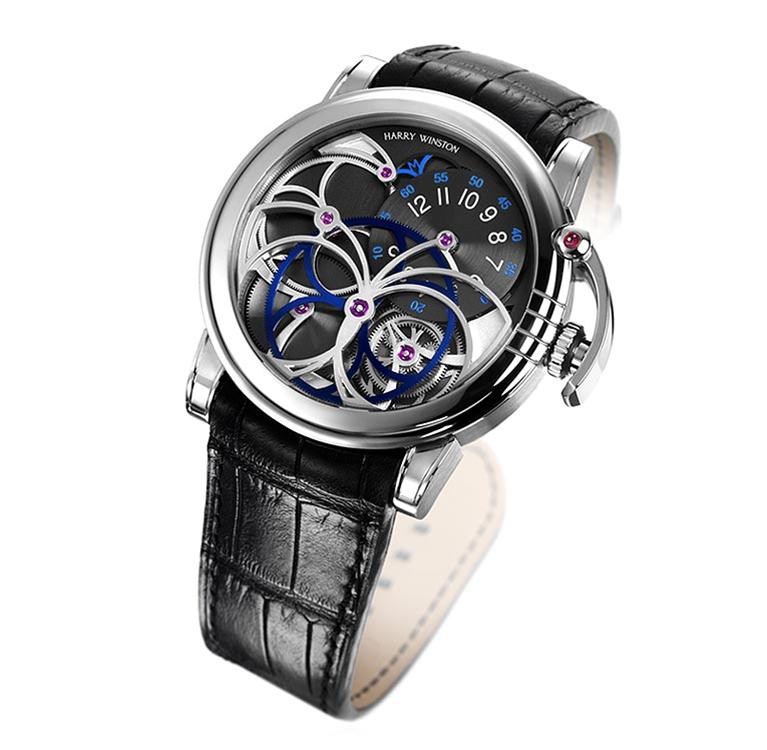
Limited edition of 50 pieces
Movement: manually wound mechanical movement by andreas Strehler.
Alternating display of hours, minutes and power reserve by pushing crown.
1st push: hours, 2nd push: minutes, 3rd push:power reserve.
Power reserve: 60 Hours.
Frequency: 18,000 v/h.
Jewels: 34 jewels
45mm round case in white gold.
OPUS 6 by GREUBEL FORSEY
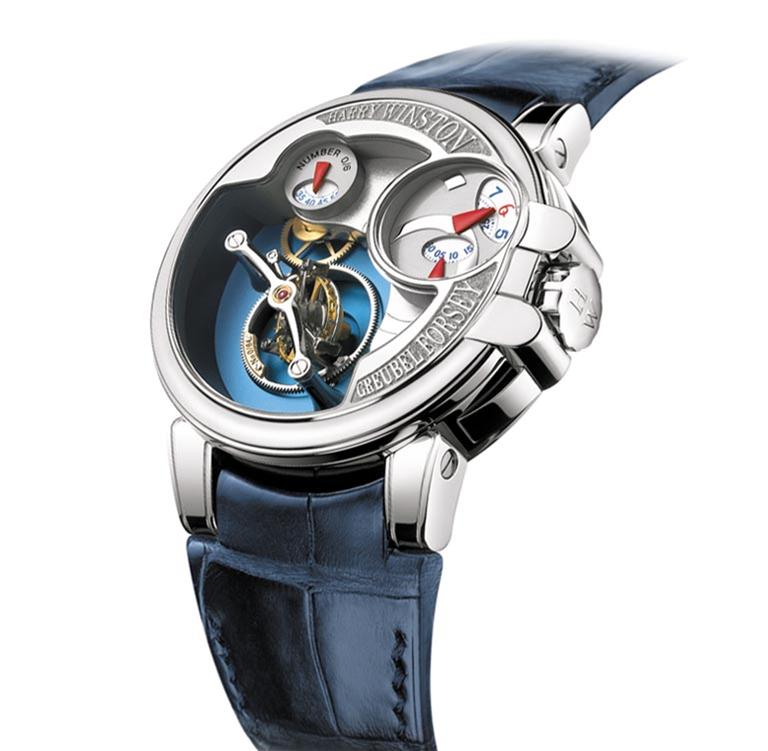
Limited edition of 6 pieces
Movement: manually wound mechanical tourbillon developed with Greubel Forsey, movement with 288 components (2 tourbillon cages with a total of 128 components).
Power reserve – 72 hours.
Hours and minutes indication by co-axial discs at 3 o’clock. Small seconds indication by disc at 11 o’clock.
44mm round case in white gold with shaped convex sapphire glasses.
OPUS 5 by FELIX BAUMGARTNER
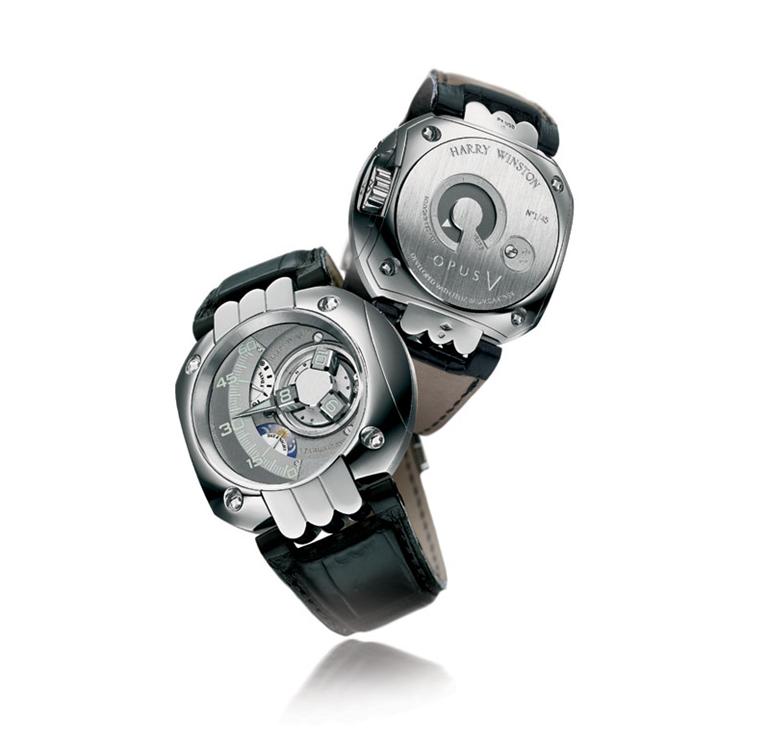
Limited edition of 100 pieces
Movement: F. Baumgartner mechanical off-centered movement with satellite hour display and retrograde minute hand moving over a 120° counter.
Power-reserve indicator (120 hours), Day and night indication.
Dial: Three small blocks arranged like satellites within a three-dimensional system. Since each block carries four numerals, two rotational axes are required to display all 12 hours: the first central axis enables each hour numeral to “move past” the minute counter while driving the retrograde hand gliding over a 120° graduated scale; while the second reveals the four numerals in accordance with first rotation.
50mm round case made of rose gold or 950 PT platinum.
OPUS 4 by CHRISTOPHE CLARET

Limited edition of 20 pieces.
Movement: manually wound mechanical tourbillon, repeating on the hours, quarters and minutes on cathedral gongs by C.Claret.
53-hour power reserve.
Frequency: 18’000v/h.
Time indications on back-to-back dials with reversed hands. Case turning on the lugs. Large moon-phase display and date.
44mm round case in 950PT platinum.
OPUS 3 by VIANNEY HALTER
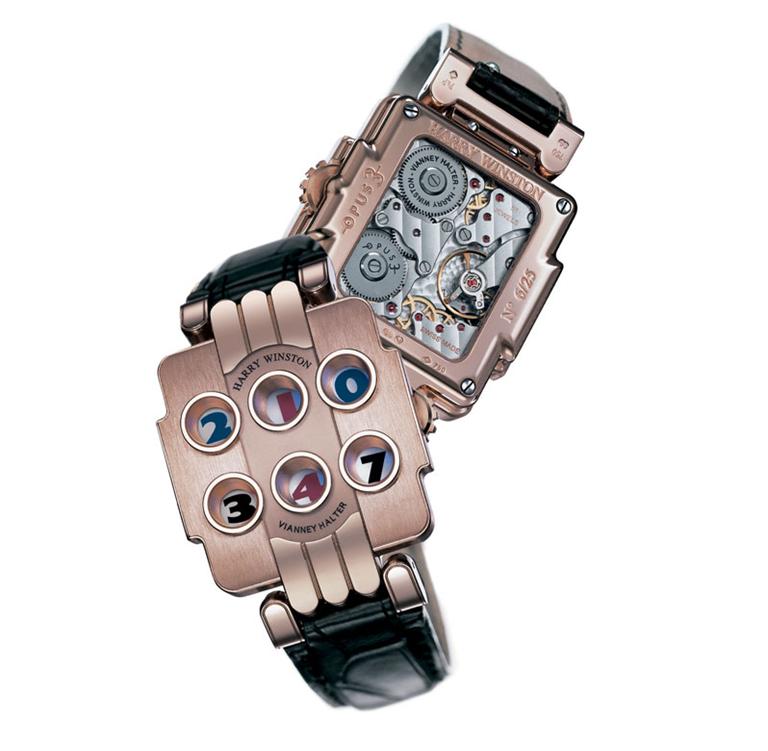
Limited edition of 55 pieces.
Movement: manually wound mechanical movement in German silver with full digit display and no hands, by Vianney Halter.
Power reserve of 40 hours.
Mechanism with 2 going trains and twin barrels (21’600 v/h). 53 jewels. Digit display by means of ten discs incorporated into the bottom plate. Horizontal winding crown with 4 winding and setting positions: date (4th notch), hour (3rd notch), minutes (2nd notch) and winding (1st notch). Countdown of the final 4 seconds before the minute jumps.
Shaped case 36.00 x 52.50 and 13.70mm high made of rose gold or 950PT platinum.
OPUS 2 by ANTOINE PREZUISO

Limited edition of 12 pieces per movement.
Tourbillon Antoine Preziuso mechanical movement with remontage mystérieux, 21’600 v/h., 21 sapphires, 110 hours power reserve. Skeleton movement with hand-made angled and polished bridge.
Tourbillon with perpetual calendar. Same movement coupled with HW 100 perpetual calendar module on reverse side.
38mm round case made of 950PT platinum (and 1 set case per movement)
OPUS 1 by FRANCOIS PAUL JOURNE

Limited edition of 6 unique pieces per movement:
6 pieces Tourbillon: F.P. Journe one-minute tourbillon movement with constant-force remontoir. Remontoir rearmed every second. F.P. Journe four-armed balances with adjusting weights.
6 pieces 5 day automatic: F.P. Journe 5 day automatic chronometer. Free-sprung balance, four adjusting weights, in-line lever escapement, 15-tooth escape-wheel.
6 pieces Resonance Chronometer: F.P. Journe twin-movement resonance-system chronometer. 38mm round case made of 950PT platinum
IF YOU ENJOYED THIS ARTICLE, THE SIFTER HIGHLY RECOMMENDS:
GEARS OF BORE: THE WORLD’S FIRST BELT-DRIVEN WATCH






